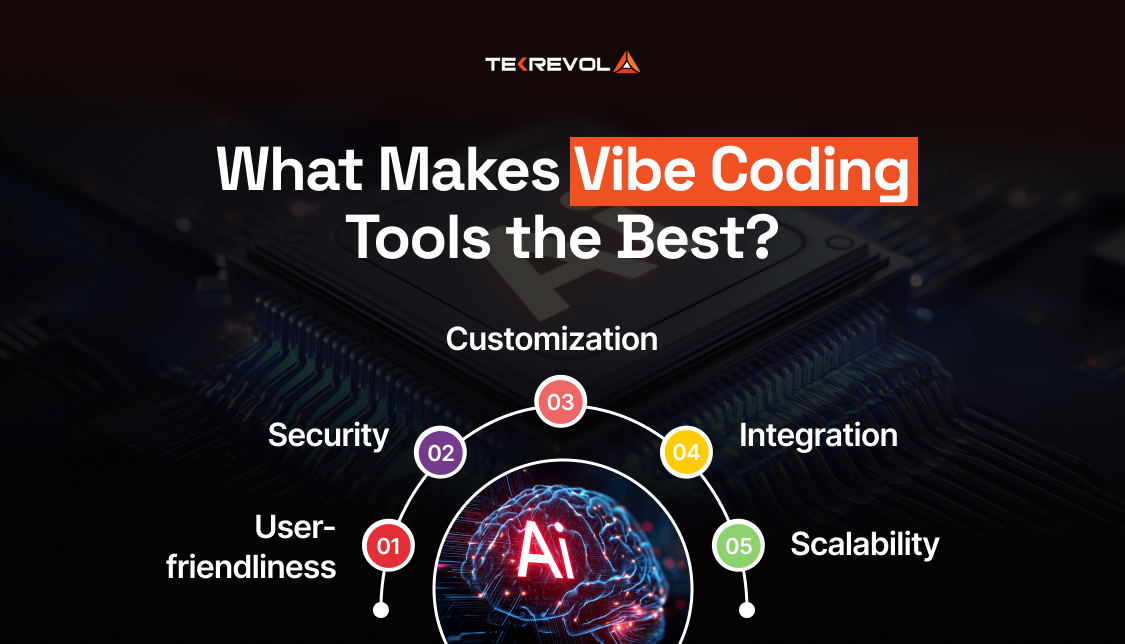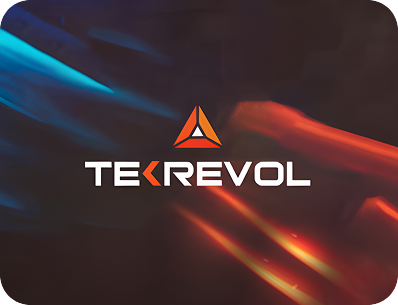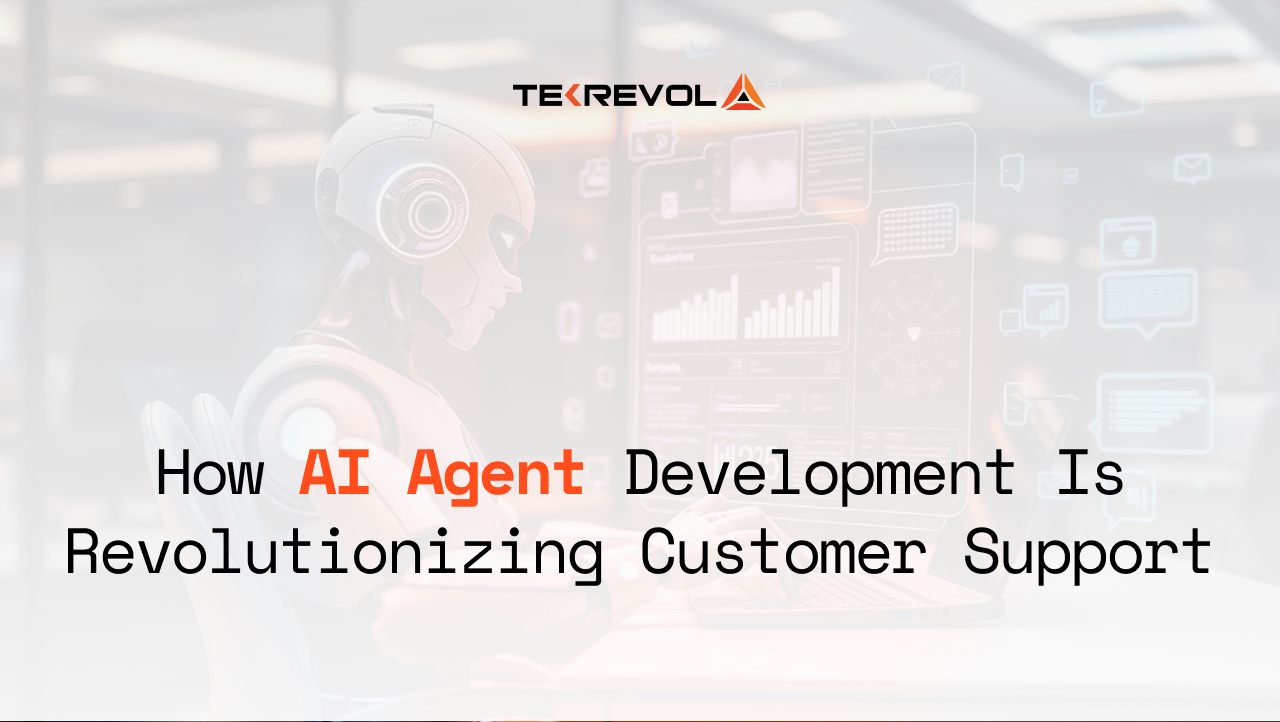The way we write code has always evolved. From punched cards to modern frameworks, every generation of developers has been trying to find efficient ways to build software. But now in 2025, something completely different is lurking on the scene: vibe coding.
If you’ve been following any forums or threads, or briefs related to the tech space, you’d have seen the term or label getting tossed around. Some are calling vibe coding the “future of software,” while others are discounting it as yet another fad heading to the rubbish bin of history.
But the truth sits somewhere in the middle.
So let’s dig deep and see.. What is vibe coding? What’s the hype all about, and which are the best vibe coding tools you should be up on by now?
What Is Vibe Coding?
At its core, vibe coding is the practice of writing software without traditional syntax. Instead of typing long lines of code, you describe what you want in natural language, and AI models generate the actual code for you.
Think of it as chatting with your computer. You say, “Build me a login screen with a button and password reset,” and the system builds the code behind it. Instead of debugging for hours, you adjust your request until it feels right.
This is why people call it “coding by vibes.” You’re shaping the outcome based on intent, flow, and feel, not rigid rules. And you just get your perfect product developed through an AI program.
Build MVPs Faster With AI-Powered Vibe Coding
TekRevol combines expert talent and AI tools to help startups launch scalable MVPs in weeks, accelerating your time to market.
Get a Free Consultation Call!Why Vibe Coding Matters in 2025?
The buzz around vibe coding isn’t just hype. It’s happening because:
- AI models are more capable than ever. According to a 2025 report from MIT Technology Review, generative AI is now mature enough to handle complex programming tasks beyond just boilerplate.
- Software demand is exploding. The U.S. Bureau of Labor Statistics projects that software developer jobs will grow by 25% between 2022 and 2032, far faster than the average job market. That gap creates room for tools that speed up development.
- Non-coders want in. In 2025, more entrepreneurs, designers, and marketers want to test app ideas without hiring a full dev team upfront. Best vibe coding tools lower that barrier and double your team productivity through AI.
In short, it’s not just about building faster. It’s about opening the door for more people to participate in coding.
The Evolution of Coding to Vibe Coding
By taking a broader view, vibe coding is simply the next logical step in the history of programming.
- While programmers of the 1960s worked in assembly languages, programming in the 1980s and 1990s began shifting to higher-level programming languages such as C++ and Java, creating an entirely new paradigm for writing software.
- Then in the 2000s, new frameworks such as Django and Rails began to elevate developer productivity even further.
- As we entered the 2010s, the world saw the introduction of low-code and no-code environments, which opened the world of software engineering up to those without any programming experience.
- Here in the 2020s, we have once again moved into a new phase of coding, with vibe coding being an extremely important piece of this transition.
Vibe coding introduces a programming experience that blends natural language and code, and allows all developers to bridge the gap between their ideas and development. And if you are curious about how this shift is shaping real businesses, you can explore it through TekRevol’s software development expertise in New York City.
Examples of Vibe Coding in Action
So, what can you actually create with vibe coding tools? Much more than you might expect:
- Web apps: Build quick prototypes for landing pages, e-commerce stores, or dashboards
- Game mechanics: Define rules like “make the character double jump” and let the AI handle the build.
- Data tasks: Automate report generation or clean datasets in minutes.
- Business workflows: Create small tools inside CRMs or connect APIs with simple prompts.
The real magic lies in iteration. You may not get the perfect output on the first try, but adjusting your “vibe” gets you closer much faster.
For businesses looking to take this further, vibe coding can even accelerate cloud application development and help companies move ideas into production-ready solutions.
What Are The Best Vibe Coding Tools in 2025?
Here’s a breakdown of some of the best vibe coding tools you’ll hear about this year:

- Replit Ghostwriter: Perfect for beginners and students. Ghostwriter sits inside Replit and turns plain text into working code across multiple languages.
- GitHub Copilot X: Copilot’s new version integrates deeply with GitHub repos, pull requests, and CI/CD. It’s designed for teams working on production-level apps.
- Cursor: A rising star in 2025, Cursor is a code editor with AI baked in. Instead of switching windows, you just ask inside your IDE.
- Warp Terminal + AI: For engineers who live in the terminal, Warp makes commands conversational. It’s a niche but powerful case of vibe coding.
- Icon Tools for Designers: These are tools that let designers create interactive prototypes using vibes, icons, and gestures instead of strict syntax. They’re especially popular in design-heavy industries.
Each of these represents a slice of the ecosystem. The best vibe coding tools depend on whether you’re a student, solo founder, or enterprise team.
Win Faster By Adopting Vibe Coding Today!
Let TekRevol transform ideas into apps quickly, keeping you ahead of every competitor with cutting-edge solutions.
Call Now For Free Expert AdviceWhat Makes the Best Vibe Coding Tools Stand Out?
Not all tools are built the same. The best vibe coding tools in 2025 share a few traits:

- User-friendliness: Anyone, even non-technical people, should be able to jump in.
- Security: Organizations want secure, compliant code generation.
- Customization: Good tools should allow you to create or edit the AI’s output, rather than locking you in.
- Integration: They integrate with existing workflows — GitHub, Jira, VS Code, or Slack.
- Scalability: If you are building a small website or production-level SaaS, the tool should scale with you.
These qualities make vibe coding tools act as a bridge between human creativity and machine intelligence. If you are exploring how AI is reshaping development, TekRevol has shared effective strategies for leveraging AI and ML to enhance mobile app intelligence that show how these innovations can be applied in real business cases.
Limitations of Vibe Coding
Vibe coding is powerful, but it is not a silver bullet. As exciting as it sounds, even the best vibe coding tools aren’t perfect. They come with certain challenges that both beginners and professionals should keep in mind before making them a primary workflow.
Context Gap
Vibe coding relies heavily on natural language input. This also means, of course, that the AI must be able to accurately interpret your intention. Because what feels completely clear to you in your phrase might not be clear to an AI. Thus, there is a chance that the AI produces some code that does not meet your expectations.
For instance, after telling the AI to “Make a login system,” it might produce a login process that isn’t robust, or it might use an entirely different batch of technologies. Instead of years of technical training, today curiosity and clear thinking might be all you need. This context gap can cause inefficiency and extra editing time.
Debugging
Even though vibe coding can generate working prototypes quickly, debugging still requires human expertise. AI tools may overlook subtle logical flaws, inefficient algorithms, or vulnerabilities in the code.
If developers rely too much on AI outputs without reviewing them, bugs can slip through into production and cause serious issues later. In practice, vibe coding accelerates creation but doesn’t fully replace traditional debugging cycles.
Over-Reliance
One of the biggest risks is over-reliance, especially among non-technical users. With vibe coding, it’s tempting to copy and paste generated scripts and deploy them without a deeper understanding.
Over-reliance can lead to insecure, unoptimized, or poorly structured software. Professional oversight is crucial to ensure that the output meets industry standards, particularly for projects involving sensitive data, security, or scalability.
Costs
Of the various vibe coding websites that provide a limited version or free trial for use, the ones that usually rise to the top are mostly subscription-based. Monthly fees can accumulate over time in usage, which is not ideal for a new start-up or freelancers with limited budgets. The benefits of productivity will need to be carefully weighed against the ongoing fees of the subscriptions, just like any other SaaS tool.
Vibe coding has the most potential to be useful if it is being used as a co-pilot, rather than a replacement for human developers. It is important to be mindful of these barriers in using the technology effectively, and as an overview to better understand the foundation of AI-powered development, TekRevol has a guide on how to develop an AI App with good tools and technologies.
Who Should Use Vibe Coding?
Vibe coding might not be for everyone, but it lends itself to certain types of companies, based on what the companies want to achieve and the skillset of individuals within the company.
For Startups
Startups tend to want to move quickly based on limited resources. So the best vibe coding tools allow the founders or small dev teams to make a minimum viable product (MVP) quickly.
Instead of taking weeks to set up a database or front-end framework, teams building functional prototypes quickly from idea to build, taking just days, not weeks, to achieve. In a competitive startup world, this speed can mean the difference between a funding opportunity and a market opportunity.
For Enterprises
Vibe coding empowers employees outside of traditional tech roles to design workflows, remove repetitive tasks, and automate routine work. This shift also allows professional developers to focus on strategy and more complex initiatives.
For companies exploring the bigger picture, adopting such tools ties directly into the growing importance of AI in business and why your business needs artificial intelligence to stay competitive in the digital era.
For Designers & Marketers
Historically, designers and marketers had to rely on developers to make their interactive ideas come to life. Vibe coding allows them to take those ideas and create working prototypes directly.
The ideas can become landing pages or interactive mockups or even small apps, all without waiting in a developer’s queue for weeks. Vibe coding will help close the gap between creative technology teams.
For Students & Hobbyists
Vibe coding serves as a fun tutor for people who are learning to code. Students can explain their intentions, examine the code that was generated, and learn. This takes some of the steepness out of the newcomer learning curve.
For hobbyists who want to do nothing but loosely engage with their apps, websites, and scripts, vibe coding is a nice way to relieve a bit of that pain and accelerate the time spent exploring.
Simply put, if you’ve got killer ideas but don’t either have time or depth of technical skills, vibe coding tools can save hours while still keeping you in control. And when the time comes to lean on greater depth of expertise to take projects to the next step, TekRevol’s IT staff augmentation services can provide on-demand help to supplement you and your team.
The Future of Vibe Coding
So where does all of this lead? Analysts and industry experts agree that vibe coding is a whole new paradigm shift in how software will be built.
Instead of writing every line of code, developers will act more like architects and reviewers. They may guide design choices, ensuring security, and handling complex logic that AI may struggle with. The repetitive, boilerplate parts of coding will increasingly be handled by the best vibe coding tools.
By 2030, it’s expected that most applications will involve some form of natural language coding layer. That means describing your ideas in plain English (or any language) will become a standard way of interacting with development platforms.
Saying that, vibe coding won’t eliminate traditional programming; instead, it will change what developers focus on.
Let Tekrevol Help You Enter the Vibe Coding Era Hassle-Free
The key takeaway is simple. Vibe coding is not magic, but it is powerful. And the best vibe coding tools in 2025 are here to make coding more accessible, faster, and more collaborative than ever.
Tekrevol helps startups and enterprises dive into next-gen software development without the usual risks. Our RevAI framework offers human-directed, AI-assisted projects that combine creativity with intelligence to enhance decision-making and improve iterations. Whether for MVP design or enterprise rollouts, our collaboration ensures that the development process is not prone to common challenges of budget overspend or poor architecture.
Partner with Tekrevol if you want to convert vibe coding from a buzzword to a true growth engine for your business and sustainability in a digital landscape.
Early Adopters Of AI Will Win This Digital Race
If you’re ready, experts at TekRevol ensure that you stay ahead in this race of embracing next-gen coding and AI technologies.
Book Your Free Consultancy Call!




